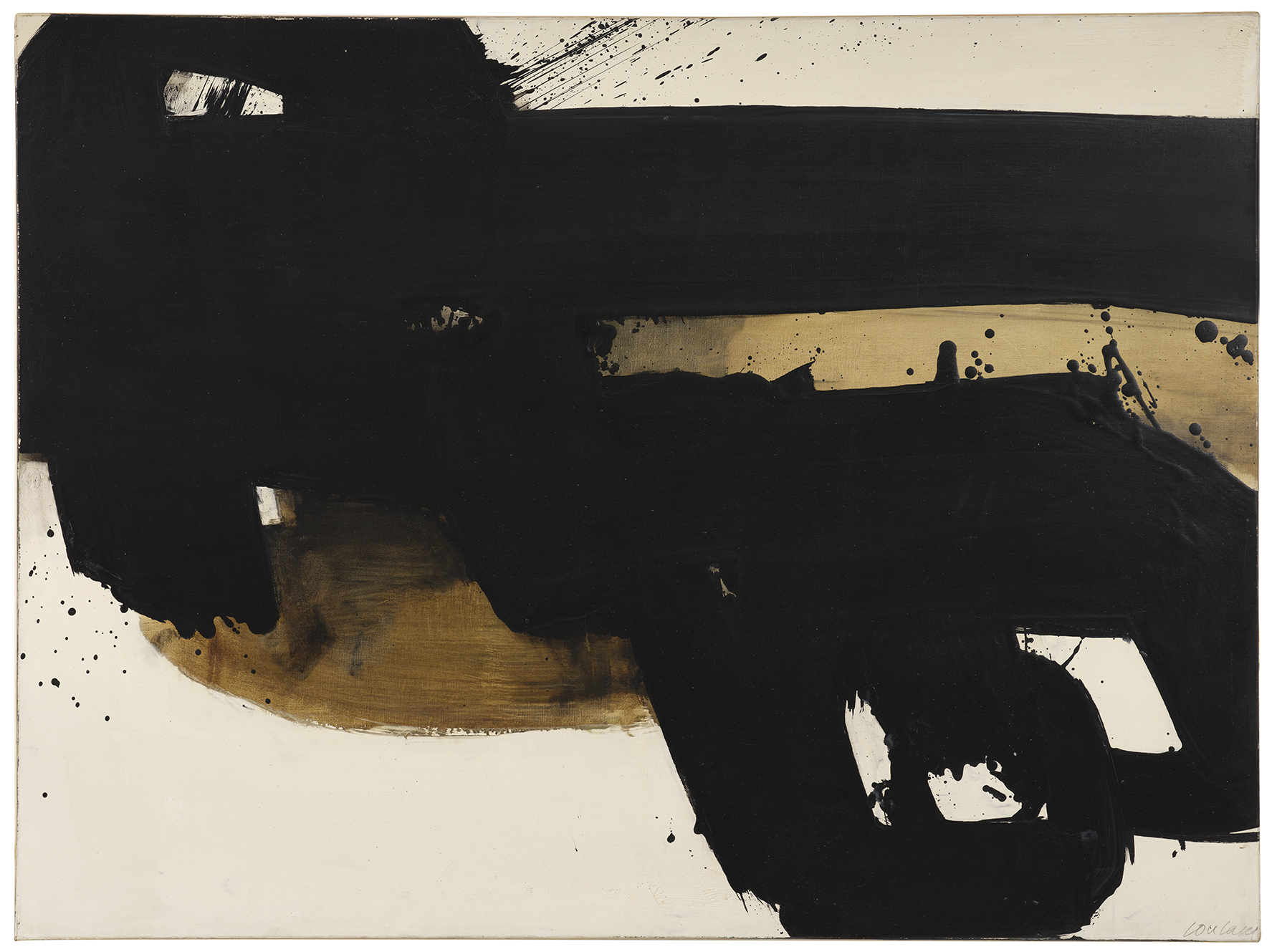Pierre Soulages, born on December 24, 1919, in Rodez, France, is one of the most prominent figures in 20th-century abstract and informal art. Known for his distinctive use of black and his ability to exploit light and texture, Soulages developed a unique style that transcends traditional painting conventions.
Soulages grew up in a family that encouraged art, and he showed a keen interest in drawing and painting from an early age. He studied at the École nationale supérieure des beaux-arts in Paris in the 1930s, but his studies were interrupted by World War II, during which he was mobilized. This period marked a turning point in his life and art, prompting him to explore deeper and more personal expressions through painting.
In the post-war years, Soulages turned to abstraction and informal art, a movement characterized by a rejection of preconceived forms and structures in favor of a more free and spontaneous expression. It was during this time that he began experimenting with black as the primary color in his works. For Soulages, black was not the absence of color but a color in its own right, capable of capturing light and revealing emotional and spiritual depth.
One of Soulages's most iconic series is the "Outrenoirs," initiated in the 1970s. "Outrenoirs" refers to works where Soulages uses various tools to apply black paint on large canvases, creating textured and reflective surfaces. These works not only capture light but also seem to emit their own light, playing with the viewer's perceptions and transforming the space in which they are displayed.
For example, "Peinture 162 x 130 cm, 9 janvier 1959" perfectly illustrates the aesthetics of the "Outrenoirs" with its broad brushstrokes of deep black that appear to vibrate and recede under different lighting conditions. These works showcase Soulages's mastery in manipulating texture and light, as well as his commitment to exploring the expressive qualities of black.
In addition to his explorations with black, Soulages is also known for his "Paintings on paper," a series where he uses abrasion and scraping to create contrasts of light and texture on paper surfaces. These works reveal a constant concern for the materiality of paint and the artistic gestures that shape it.
Over the decades, Soulages's work has been widely celebrated and exhibited worldwide. He participated in numerous major international exhibitions, receiving critical and public recognition for his constant exploration of light, color, and materiality in abstraction. In 1979, he became the first living artist to present a retrospective at the Musée national d'art moderne in Paris, solidifying his status as a giant of contemporary art.
Outside of his paintings, Soulages also worked on architectural projects and stained glass windows, exploring how light can transform spatial experience. His interest in the relationship between art and architecture reflects his holistic vision of art as a transformative and enriching force in everyday life.
Throughout his career, Pierre Soulages continued to paint and experiment, exploring new techniques and pushing the boundaries of abstraction. His influence on contemporary art is undeniable, not only because of his distinctive aesthetic and innovative use of black but also because of his ability to evoke deep emotions and philosophical reflections through his art.
Pierre Soulages passed away on December 26, 2022, at the age of 102, leaving behind an impressive artistic legacy that continues to inspire and captivate future generations of artists and art enthusiasts worldwide.
